Last Updated on March 11, 2024
Knowing the difference between biodegradable vs compostable items is an important part of reducing your carbon footprint. Yes, they are two entirely different things!
Is biodegradable the same as compostable? Is one better than the other? The major difference between compostable vs biodegradable items is time. Biodegradable items take an undetermined time to break down, which can be months, years, or even centuries. Compostable materials decompose into natural, nutrient-rich products at a much faster rate. Both have no ecological harm but different settings that make them ideal. This post details the difference and includes a list of compostable items as well as a list of biodegradable items!
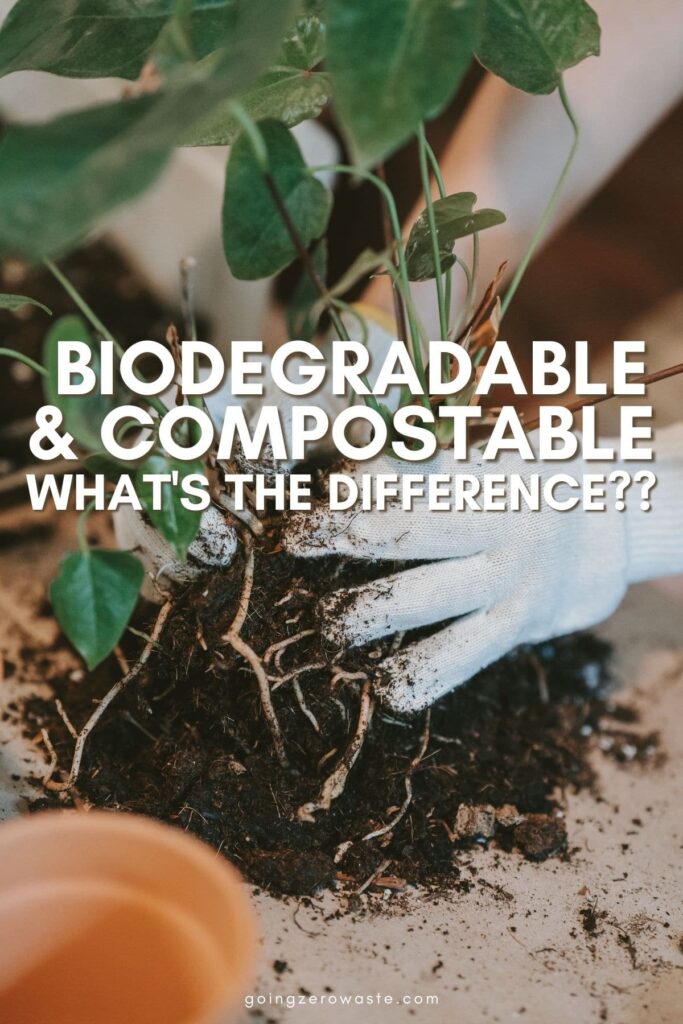
Table of Contents
Biodegradable vs Compostable Items
The term compostable means the material disintegrates into non-toxic, natural elements in a compost setting. The term biodegradable describes a material that micro-organisms like bacteria or fungi can decompose.
Composting is a great way to reduce your carbon footprint and go green, but unless you know the difference between biodegradable items and compostable items, you might not be doing all that you can. So, what sets them apart, really?
As the reality of the world’s waste problem becomes clearer, businesses have tried to provide consumers with simple solutions through products labeled as “environment-friendly”. However, many of these labels can be confusing and misleading to consumers.
I’ve been there and done that. But don’t worry! Let me help you.
is biodegradable the same as compostable?
Is biodegradable the same as compostable, then? No, but I’ll make it simple! Biodegradable items break down into organic elements, carbon dioxide, and water vapor by organisms like bacteria and fungi through a process called biodegradation.
Almost everything you see, touch, smell, or taste can biodegrade back into the environment. BUT, it will take hundreds of thousands of years for most things to do that.
An example is a biodegradable grocery bag, which is usually plastic made from corn. While it will eventually break down, there is still microplastic waste left behind for a very long time.
For a product to be labeled as biodegradable, it must quickly decompose into natural materials. Third-party certifiers, such as Control Union and BPI, typically restrict the acceptable breakdown times to between three and six months.
Good to know? Yes, but here’s the catch: most biodegradables get sent to the landfill. They can only be helpful to the environment if disposed of properly.
Furthermore, biodegradable products in landfills often get buried. Underneath mountains of trash, they don’t break down and instead produce methane, a greenhouse gas bad for the environment.
list of biodegradable items
Since we’ve broken down what the term biodegradable means, I’ll give you a quick list of examples. Biodegradable items include:
- Cork: Cork yoga mats, corkboards, cork everything! Cork is totally sustainable to harvest and is completely biodegradable, making it the perfect material to make all sorts of things.
- Bamboo: Bamboo straws, bamboo textiles, bamboo toothbrushes, etc. Bamboo is super sustainable and biodegrades without leaving a harmful trace.
- Human Waste: Human waste breaks down and can even act as fertilizer, but it can leave behind yucky bacteria and attract pests, which makes it noncompostable.
- Biodegradable Consumables: From biodegradable trash bags to water bottles, you can find many things that are available as ‘biodegradable’ now. However, be aware that to do any good (or at least, to not do any harm), these items have to be disposed of properly.
- Cellulose Nanofibrils (CNFs): Applied high tensile strength, similar to Kevlar, construction materials, packaging, etc, CNFs show a ton of promise for a more sustainable future.
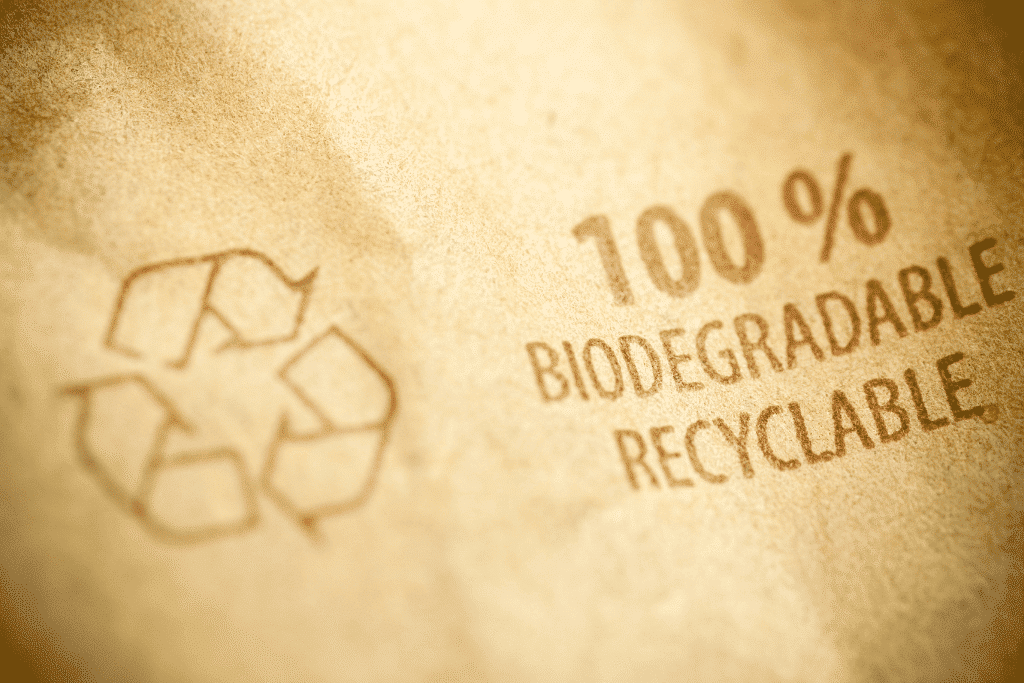
compostable vs biodegradable items
So what does compostable vs biodegradable mean? Compostable items and packaging break down into carbon dioxide, water, and biomass at the same rate as natural materials. When properly collected and processed, we can use these materials for fertilizers that improve soil quality.
Unlike biodegradables, a compostable grocery bag will turn into organic matter or humus. No plastics or chemicals are left behind.
Compostable products have major advantages over biodegradable ones:
- They break down at a much faster rate, with many compostable products disintegrating in roughly 90 days, which is the requirement for BPI certification.
- They decompose into nutrient-rich products, which generate healthy soil for the planet.
In simple words, everything that is compostable is also biodegradable. But biodegradable does not always mean compostable. Don’t worry, here’s a list of compostable items to help clear it up.
list of compostable items
To further clear up the biodegradable vs compostable debate, remember this simple fact: Everything compostable does biodegrade, but compostable items decompose with the express purpose of making nutrient rich soil/fertilizer.
- Kitchen Scraps: Veggie peels, fruit cores, coffee grounds, oh my! Kitchen scraps are nitrogen rich and make great additions to a compost heap or bin. Avoid animal byproducts like meat and dairy, however, as they tend to stink and attract pests.
- Paper: Scrap paper, junk mail, newspapers, you name it. As long as there isn’t a waxy, shiny, or plastic coating on it (like the plastic windows on envelopes), paper makes a great carbon-rich additive to compost.
- Cardboard: Similar to paper, any cardboard that isn’t coated (like drink cartons) or overly greasy (like pizza boxes) are carbon rich. Just shred or break down into small pieces so it breaks down quickly.
- Garden Clippings: Pulled weeds, dried leaves, small twigs, etc. all break down into nutrient-rich materials that are great for compost. These items are obviously also biodegradable, but are highly valued in a composting setting.
- Eggshells: Not the whole egg, for the same reason you don’t want to try to compost meat or cheeses, but the shells themselves make great nitrogen-rich additives to your compost.
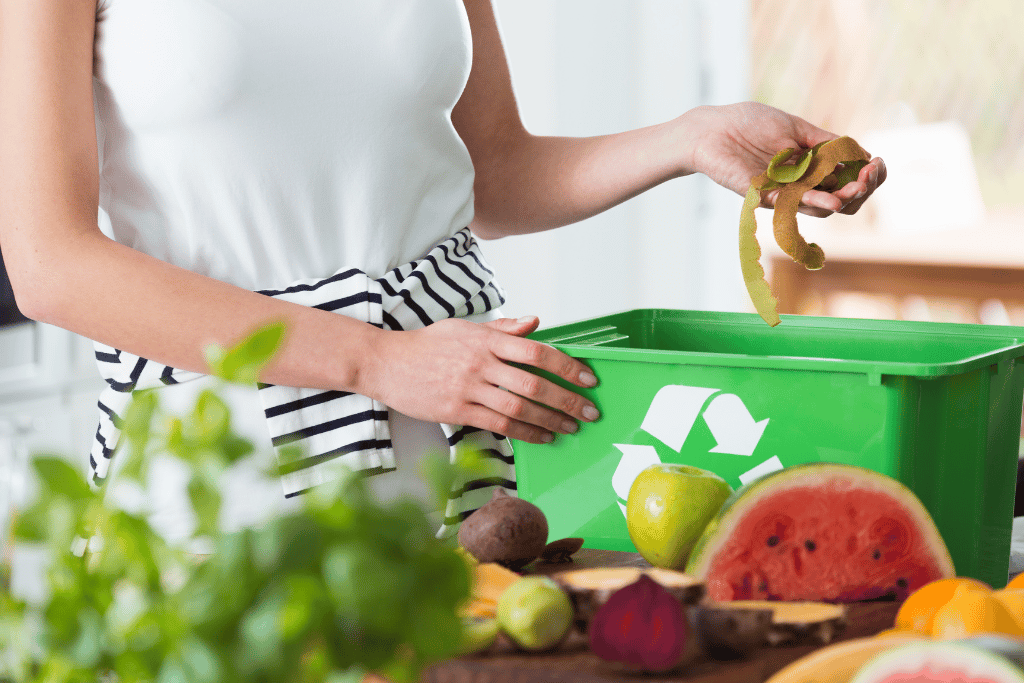
what happens during decomposition?
To fully understand the whole biodegradable vs compostable discussion, let us look at the decomposition process.
The micro-organisms involved in decomposition are:
- Bacteria: microscopic, single-celled organisms that exist in large groups and neither plant nor animals
- Actinobacteria: a bacterial species often found in soil and water that changes shapes to adapt to the environment
- Fungi: spore-producing organisms that eat organic matter
- Protozoa: a group of single-celled organisms, either free-living or parasitic, that feed on organic matter
- Rotifers: a minute multicellular aquatic animal that eats dead material, algae, and other microscopic living organisms
To decompose, these organisms require 4 ingredients: carbon, nitrogen, oxygen, and water. There are 2 types of microorganism degradation. Both produce carbon dioxide and water.
- Aerobic digestion: degradation of materials by microorganisms when oxygen is present; doesn’t produce methane
- Anaerobic digestion: degradation of materials without the help of oxygen; produces methane
As mentioned earlier, waste like biodegradable products often gets buried in landfills along with other kinds of trash. Due to a lack of oxygen, beneficial bacteria cannot survive underneath all the trash.
What happens? The biodegradable products break down through anaerobic digestion, producing methane. High levels of methane can reduce the amount of oxygen in the air. Its presence in our atmosphere also affects the earth’s temperature and climate system.
There are landfills that collect the methane produced in the facilities and use it to create electricity. Sadly, most do not have this capability.
FAQ
How should I dispose of biodegradable items?
You can use commercial compost services, but these are usually hard to find, and they may not always accept all types of products. Aim to choose reusable items as much as possible. Hey, some coffee shops offer discounts if you bring your own cup!
How should I dispose of compostable products?
This is a benefit compostable products have in the biodegradable vs compostable debate. You can dispose of compost items at home!
The best way to dispose of compostable products is to throw them away in a compost heap. In other areas, there are industrial or commercial composting facilities where compostable products will break down with the right mixture of heat, microbes, and time.
However, if a composting facility isn’t available in your area, you can create a compost heap at home. This will be beneficial too especially if you are into gardening!
Are biodegradable and compostable products recyclable?
No, biodegradable and compostable products are not recyclable and can contaminate or disrupt the recycling system if intermixed with non-compostable products.
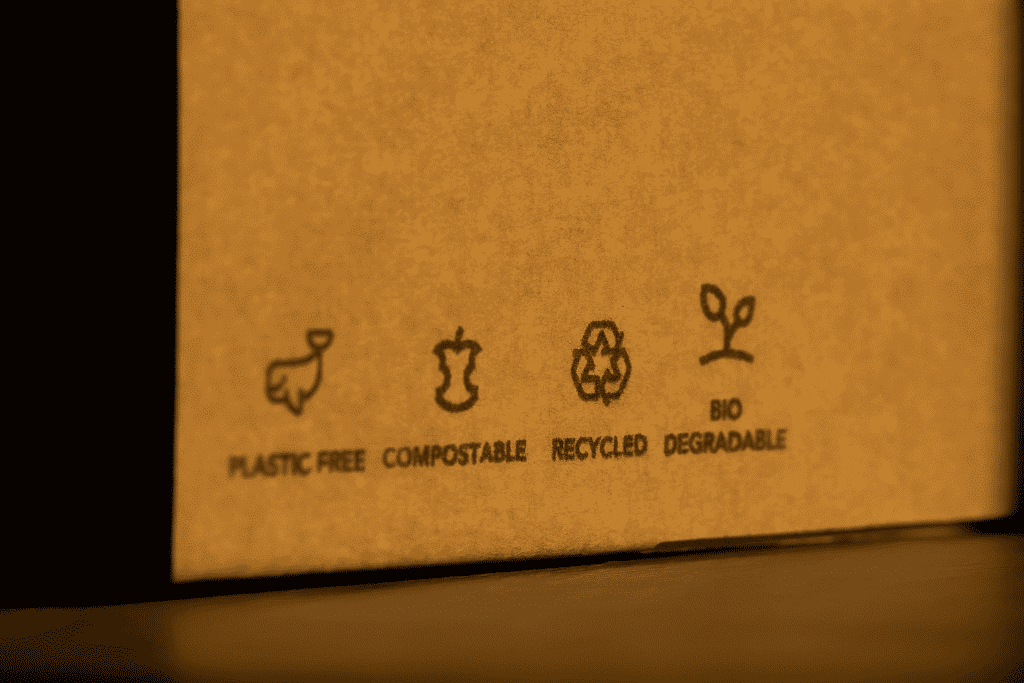
how can we make a difference?
At present, the best solution to help the environment continues to be reducing consumption (and waste), opting for reusables when you can, and properly disposing of waste — no wishcycling here! Yes, reducing waste is key!
So next time you’re shopping for environmentally responsible products, read the labels carefully. Try and choose reusable items first. Then, when debating between compostable vs biodegradable packaging, aim for products that are compatible with home composting first. If that’s not an option, make sure you dispose of your waste properly.


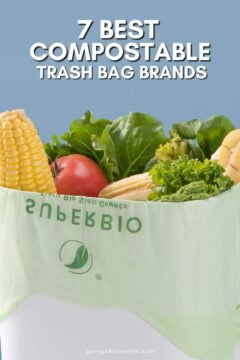








Hello Katherine. I’m understanding that you are saying biodegradable and compostable products are not recyclable . What about paper and cardboard?
Can I put the biodegradable items in my home compost instead of putting in a landfill or commercial compost?